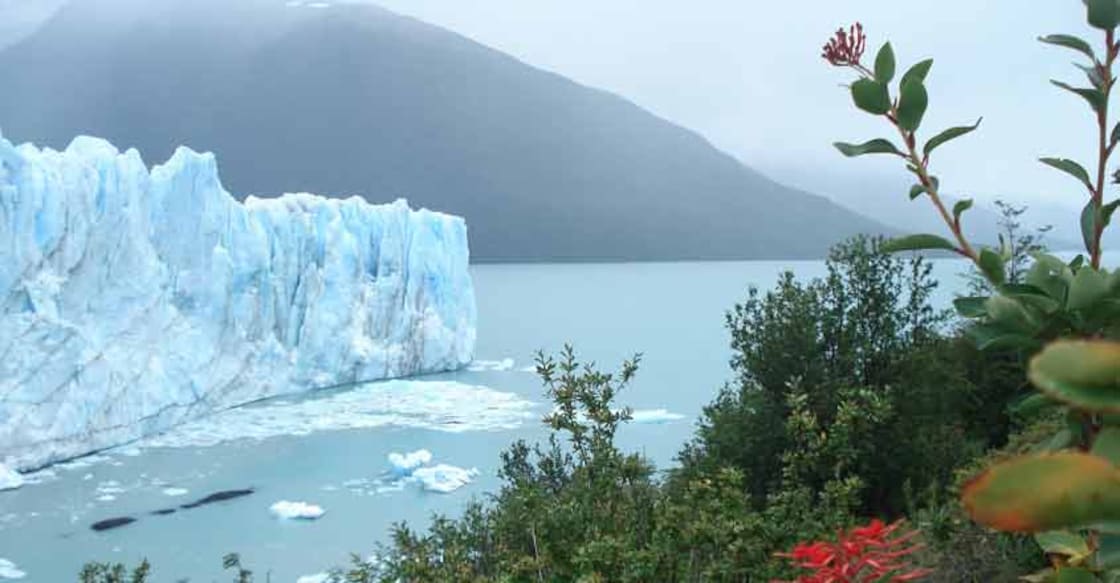Limit emissions to tackle ocean changes: IPCC

Mail This Article
Monaco: The Intergovernmental Panel on Climate Change (IPCC) Special Report on Wednesday highlighted the urgency of prioritising timely, ambitious and coordinated action to address the unprecedented and enduring changes in the ocean and cryosphere.
The report - approved by the 195 nations a day earlier - revealed the benefits of ambitious and effective adaptation for sustainable development and, conversely, the escalating costs and risks of delayed action.
The ocean and the cryosphere - the frozen parts of the planet - play a critical role for life on earth.
The IPCC Special Report on the Ocean and Cryosphere in a Changing Climate provides new evidence for the benefits of limiting global warming to the lowest possible level -- in line with the goal that governments set themselves in the 2015 Paris Agreement.
Urgently reducing greenhouse gas emission limits the scale of ocean and cryosphere changes. Ecosystems and the livelihoods that depend on them can be preserved.
A total of 670 million people in high mountain regions and 680 million people in low-lying coastal zones depend directly on these systems.
Four million people live permanently in the Arctic region, and small island developing states are home to 65 million people. Global warming has already reached one degree Celsius above the pre-industrial level, due to past and current greenhouse gas emissions.
There is overwhelming evidence that this is resulting in profound consequences for ecosystems and people. The ocean is warmer, more acidic and less productive.
Melting glaciers and ice sheets are causing a rise in sea level, and coastal extreme events are becoming more severe.
"The open sea, the Arctic, the Antarctic and the high mountains may seem far away to many people," said Hoesung Lee, Chair of the IPCC.
"But we depend on them and are influenced by them directly and indirectly in many ways -- for weather and climate, for food and water, for energy, trade, transport, recreation and tourism, for health and wellbeing, for culture and identity."
"If we reduce emissions sharply, consequences for people and their livelihoods will still be challenging, but potentially more manageable for those who are most vulnerable," Lee said.
Knowledge assessed in the report outlines climate-related risks and challenges that people around the world are exposed to today and that future generations will face.
More than 100 authors from 36 countries assessed the latest scientific literature related to the ocean and cryosphere in a changing climate for the report, referencing about 7,000 scientific publications.
The report notes major changes in high mountains affecting downstream communities.
People in mountain regions are increasingly exposed to hazards and changes in water availability, the report said. Glaciers, snow, ice and permafrost are declining and will continue to do so. This is projected to increase hazards for people, for example through landslides, avalanches, rockfalls and floods.
Smaller glaciers found for example in Europe, eastern Africa, the tropical Andes and Indonesia are projected to lose more than 80 per cent of their current ice mass by 2100 under high emission scenarios.
The retreat of the high mountain cryosphere will continue to adversely affect recreational activities, tourism, and cultural assets.
As mountain glaciers retreat, they are also altering water availability and quality downstream, with implications for many sectors such as agriculture and hydropower.
Glaciers and ice sheets in polar and mountain regions are losing mass, contributing to an increasing rate of sea level rise, together with expansion of the warmer ocean.
While sea level has risen globally by around 15 cm during the 20th century, it is currently rising more than twice as fast - 3.6 mm per year - and accelerating, the report showed.
Sea level will continue to rise for centuries. It could reach around 30-60 cm by 2100 even if greenhouse gas emissions are sharply reduced and global warming is limited to well below 2 degrees Celsius, but around 60-110 cm if greenhouse gas emissions continue to increase strongly.
The report observes frequent extreme sea level events.
Sea level rise will increase the frequency of extreme sea level events, which occur for example during high tides and intense storms.
Indications are that with any degree of additional warming, events that occurred once per century in the past will occur every year by mid-century in many regions, increasing risks for many low-lying coastal cities and small islands.
Without major investments in adaptation, they would be exposed to escalating flood risks, the report shows.
Some island nations are likely to become uninhabitable due to climate-related ocean and cryosphere change, the report said, but habitability thresholds remain extremely difficult to assess.
Global warming is changing ocean ecosystems too.
Warming and changes in ocean chemistry are already disrupting species throughout the ocean food web, with impacts on marine ecosystems and people that depend on them, the report said.
To date, the ocean has taken up more than 90 per cent of the excess heat in the climate system. By 2100, the ocean will take up two to four times more heat than between 1970 and the present, if global warming is limited to 2 degrees Celsius, and up to five to seven times more at higher emissions.

